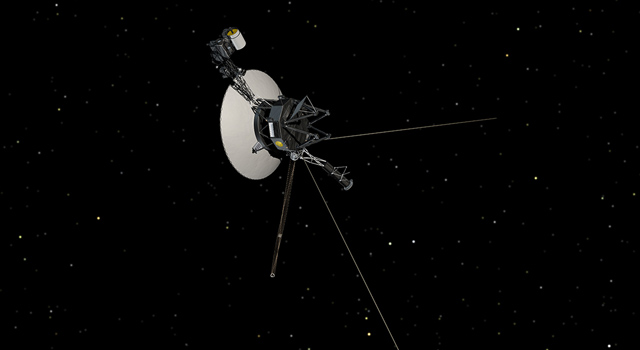News | February 18, 1986
Voyager 2 Prepares for 1989 Neptune Flyby

NASA's Voyager 2, departing from its Jan. 24 encounter with Uranus, has undergone major course correction to prepare the spacecraft for its 1989 flyby of the planet Neptune.
Voyager Project members at JPL sent commands instructing the spacecraft to fire its hydrazine thrusters for 2 hours and 33 minutes on Feb. 14. The maneuver will allow mission planners the widest range of choices for Voyager 2's precise flight path during its Neptune encounter in August 1989.
The maneuver increased the spacecraft's speed, from 19.698 kilometers per second (44,064 miles per hour) to 19.715 km/sec (44,101 mph), both measured in relation to the Sun. The course change also moves up Voyager 2's arrival time at Neptune, from 10:15 p.m. Pacific Daylight Time Aug. 26, 1989, to 9 a.m. PDT Aug. 25, 1989.
Mission planners expect to execute another major course correction in 1987 that will change the spacecraft's arrival time by several hours. Based on the best knowledge of the Neptunian system at the time, that correction and later, smaller maneuvers will finalize Voyager 2's flight path at the planet to offer the best opportunity for scientific studies.
The maneuver leaves Voyager 2 with propellant supplies within planners' budgets, which permit operation well into the 21st century. After its Neptune encounter, Voyager 2 will continue out of the solar system in search of the heliopause -- the outer boundary of the Sun's magnetic influence and the beginning of interstellar space.
The Voyager Project is managed by JPL for NASA's Office of Space Science and Applications.
